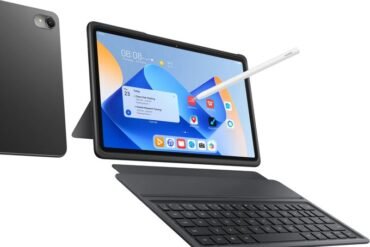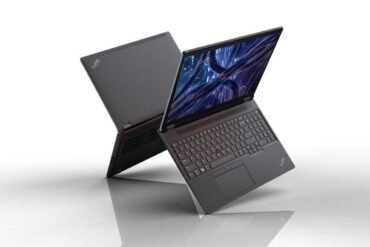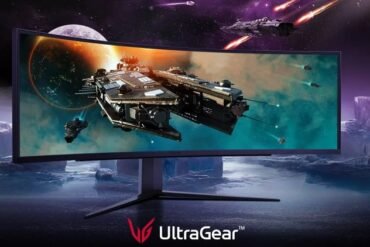Choosing the Right PSU Connectors for Your PC Build
Table of Contents
- Understanding PSU Connectors: Essential Components Explained
- Types of PSU Connectors: A Comprehensive Overview
- Compatibility Considerations: Matching Connectors to Your PC Components
- Cable Management Tips: Organizing Your PSU Connectors for Optimal Airflow
- Future-Proofing Your Build: Selecting PSU Connectors for Upgradability
Understanding PSU Connectors: Essential Components Explained
When it comes to building a PC, choosing the right power supply unit (PSU) connectors is crucial. These connectors are responsible for supplying power to various components in your computer. Understanding the different types of PSU connectors available will help you ensure compatibility and efficiency in your PC build.
Here are some essential PSU connectors you should know:
- ATX 24-pin Connector: This is the main power connector that supplies power to the motherboard. It consists of a 20-pin block with an additional 4-pin block for providing extra power to the CPU.
- EPS 8-pin Connector: This connector also provides power to the motherboard, specifically to the CPU. It is commonly used in high-performance systems.
- PCIe Connectors: These connectors are used to supply power to graphics cards. Depending on the power requirements of your GPU, you may need either a 6-pin, 8-pin, or a combination of both.
- SATA Connectors: SATA connectors are used to power your storage devices, such as hard drives and solid-state drives (SSDs). These connectors typically have L-shaped ends for easy insertion and removal.
- Molex Connectors: Molex connectors are used for powering older peripherals, such as fans, optical drives, and certain types of LED lighting. They are gradually being phased out in favor of SATA and PCIe connectors.
It’s important to note that not all PSUs come with the same set of connectors. Before purchasing a PSU, ensure that it has the necessary connectors to power all your components. Additionally, consider the wattage and efficiency rating of the PSU to ensure it can handle the power demands of your system.
When connecting the PSU cables to your components, make sure to match the connectors correctly and avoid forcing any connections. Proper cable management is also important to maintain good airflow and prevent cable clutter.
In conclusion, understanding PSU connectors is essential for a successful PC build. By familiarizing yourself with the different types of connectors and their functions, you can choose a PSU that meets your system’s power requirements and ensures optimal performance.
Types of PSU Connectors: A Comprehensive Overview
When building a PC, one crucial component that often gets overlooked is the power supply unit (PSU) connectors. These connectors play a vital role in providing power to various components of your system. Understanding the different types of PSU connectors available will help you choose the right ones for your PC build. Here is a comprehensive overview of the most common PSU connectors you may come across:
- ATX 24-pin Connector: This is the primary power connector that supplies power to the motherboard. It consists of a 20-pin block with an additional 4-pin block that can be detached if your motherboard doesn’t require it.
- CPU 4+4-pin Connector: This connector provides power to the CPU. It consists of an 8-pin block that can be split into two 4-pin connectors. Most modern motherboards require this connector for stable CPU power delivery.
- PCIe Connectors: These connectors are used to power graphics cards. Depending on the card’s power requirements, you may find 6-pin, 8-pin, or 8-pin+6-pin connectors. Ensure your PSU has the necessary number and type of PCIe connectors for your graphics card.
- SATA Connectors: SATA connectors supply power to your storage drives such as SSDs and HDDs. Most PSUs come with multiple SATA connectors, allowing you to connect multiple drives.
- Molex Connectors: Molex connectors were commonly used in older systems for powering peripherals like fans and lighting. While they are less prevalent today, some devices may still require them. Make sure your PSU has enough Molex connectors if needed.
These are the primary PSU connectors you will encounter when building a PC. It’s essential to choose a PSU that provides the necessary connectors for your specific hardware configuration. Ensure you have enough connectors to power all your components, while also considering any future upgrades you may want to make. Investing in a quality PSU with ample connectors will ensure a stable and efficient power supply to your PC.
Compatibility Considerations: Matching Connectors to Your PC Components
When building a PC, one important aspect to consider is the compatibility of connectors between your power supply unit (PSU) and the various components in your system. Ensuring that the connectors match the requirements of your components is crucial for proper functioning and optimal performance. Here are some key points to keep in mind:
- Research your components: Before purchasing a PSU, it’s essential to research the connectors required by your specific components. Different components such as the motherboard, graphics card, hard drives, and peripherals may have different power connector requirements.
- ATX standard: The most common power supply connector standard is the ATX (Advanced Technology eXtended) standard. ATX power supplies generally have a 24-pin main power connector that is compatible with most motherboards. However, some motherboards may require additional connectors, such as an 8-pin (or 4+4-pin) CPU power connector or a 6-pin (or 6+2-pin) PCIe connector for the graphics card.
- Modular vs. non-modular PSUs: Modular PSUs offer the advantage of customizable cable management by allowing you to connect only the cables you need. This can help eliminate clutter and improve airflow inside your PC. However, it’s important to ensure that the modular PSU you choose has the necessary connectors for your components.
- Power requirements: Each component in your PC has specific power requirements. It’s crucial to check the power consumption of your components and ensure that your PSU can provide sufficient power through the appropriate connectors. Insufficient power can lead to system instability or even damage to your components.
- Adapters and converters: In some cases, you may encounter situations where the connectors on your PSU do not directly match the connectors on your components. In such situations, adapters or converters can be used to bridge the gap. However, it’s important to note that using adapters may introduce additional points of failure and potentially affect system reliability.
By carefully considering the compatibility of connectors between your PSU and components, you can ensure a smooth and successful PC build. Take the time to research your components, understand their power connector requirements, and choose a PSU that provides the necessary connectors to meet those requirements. This will help avoid compatibility issues and ensure the best performance from your PC.
Cable Management Tips: Organizing Your PSU Connectors for Optimal Airflow
When building a PC, cable management is a crucial aspect that is often overlooked. Properly organizing your PSU connectors not only ensures a clean and aesthetically pleasing build, but also improves the airflow within your system. Here are some tips to help you achieve optimal cable management:
- Plan your cable routing: Before connecting any cables, take a moment to plan the route each cable will take. Consider the shortest and most direct path to each component, avoiding any obstructions that could impede airflow.
- Use cable ties or Velcro straps: Once you have planned the routing, secure the cables together using cable ties or Velcro straps. Bundling the cables together not only makes them easier to manage, but also helps in creating a cleaner look. Make sure not to overtighten the ties, as it may damage the cables.
- Separate power cables from data cables: To reduce any interference, it is recommended to separate power cables from data cables. Grouping them separately helps in preventing electromagnetic interference and ensures a more reliable system.
- Utilize cable management features: Many PC cases come with cable management features such as routing holes, tie-down points, and cable channels. Take advantage of these features to neatly route and secure your PSU connectors.
- Consider modular PSUs: Modular power supply units (PSUs) allow you to connect only the cables you need, eliminating unnecessary clutter. This not only makes cable management easier but also improves airflow by reducing cable obstruction.
- Hide excess cables: If you have excess cables that you don’t need to connect, consider hiding them behind the motherboard tray or using cable management accessories like cable combs or sleeves to keep them neatly tucked away.
By following these cable management tips, you can ensure that your PSU connectors are organized in a way that promotes optimal airflow within your PC build. Not only will this improve the overall aesthetics of your system, but it will also contribute to better cooling performance and potentially extend the lifespan of your components.
Future-Proofing Your Build: Selecting PSU Connectors for Upgradability
When building a PC, one of the most important components to consider is the power supply unit (PSU). The PSU is responsible for providing power to all the other components in your system, making it a critical part of your build. However, not all PSUs are created equal, and selecting the right connectors can greatly impact the upgradability of your build. Here are some factors to consider when choosing PSU connectors for future-proofing your PC build.
- Modularity: Look for a modular PSU that allows you to disconnect and remove unnecessary cables. This not only helps with cable management but also makes it easier to add new components or upgrade existing ones in the future.
- Compatibility: Ensure that the PSU connectors are compatible with the components you plan to use or may want to upgrade to in the future. Different components may require specific connectors, so check the specifications of your CPU, GPU, motherboard, and other devices to ensure they match the PSU connectors.
- Number and Type of Connectors: Consider the number and type of connectors provided by the PSU. Look for a PSU that offers a variety of connectors, including SATA, PCIe, and CPU power connectors. This allows you to connect a wide range of devices and accommodate potential upgrades without the need for additional adapters.
- Power Delivery: Check the power delivery capabilities of the PSU connectors. Ensure they can provide enough power for your current components and potential upgrades. It’s important to have headroom for future upgrades to avoid potential power-related issues.
- Efficiency and Certification: Look for PSUs with higher efficiency ratings and certifications such as 80 PLUS. These PSUs are designed to waste less power as heat, resulting in lower energy bills and reduced strain on the components.
By selecting the right PSU connectors for your PC build, you can future-proof your system and make it easier to upgrade or add new components down the line. Invest in a modular PSU with the appropriate connectors, ensure compatibility, and consider factors like power delivery and efficiency. With careful consideration, you can build a PC that is ready for future upgrades and able to meet your evolving needs.



























